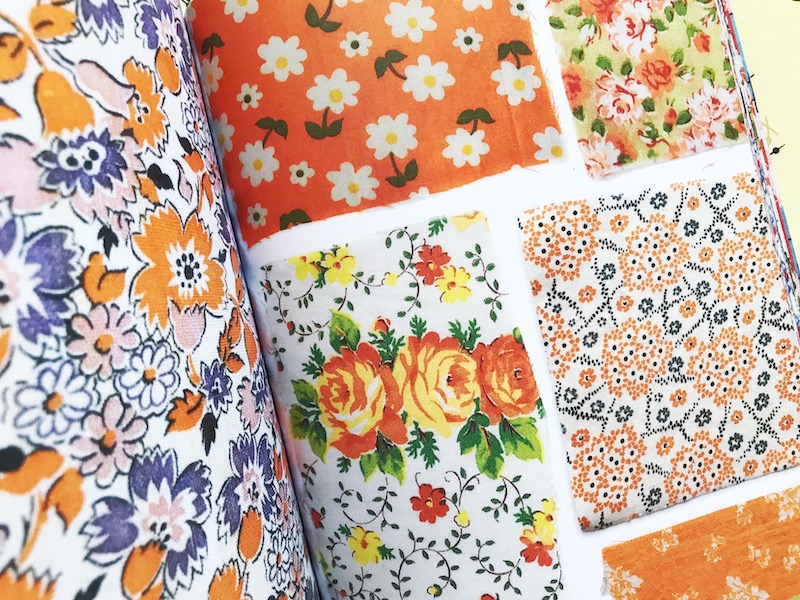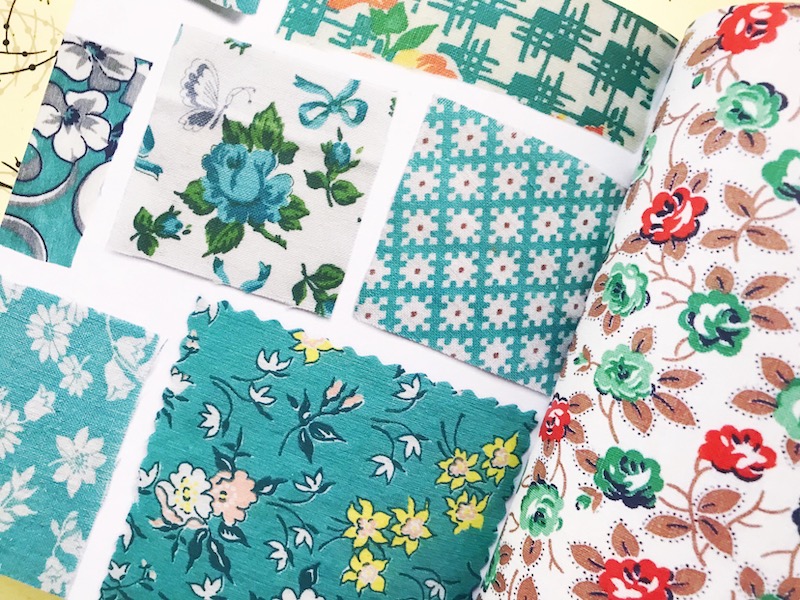Feed sacks are the perfect example of a utilitarian product turned into something beautiful. In Feed Sacks: The Colourful History of a Frugal Fabric, Author Linzee Kull McCray explores the history of the humble feed sack, from a plain burlap or cotton sack to exuberantly patterned and colourful bags that were repurposed into frocks, aprons and quilts by thrifty housewives in the first half of the 20th century. Extensive imagery and at-scale reproductions of these fabrics create an inspiring sourcebook of pattern and colour.
Interestingly, the term ‘feed sack’ itself is a bit of a misnomer: while a substantial proportion of the printed cotton bags produced did indeed contain animal feed, the majority - 52% - were actually filled with flour. They were also used for all manner of other goods, from sugar, grains and beans to fertilizer and even ammunition!
I initially expected this book to be primarily a pattern sourcebook accompanied by a brief history of the printed cotton feed sack, but it’s so much more than that. Over 500 pages, McCray charts the evolution of the feed sack from its inception in the 19th century when it replaced the wooden barrel as a container for dry goods - following the invention of the lockstitch sewing machine, cotton sacks were cheap to produce, and easier than barrels to stack, transport, and handle. Early printed bags featuring the logos of mills and manufacturers; the book has numerous examples, including some of the original hand-sketched designs and mockups.
The heyday of the fashion-print cotton ‘feed sack’ was actually briefer than I had imagined: although the idea to make the ubiquitous cotton packaging bags more appealing to consumers emerged in the 1920s, it was only in the mid 1930s that the concept really took off. The era of the feed sack waned during the 1950s with the introduction of cheaper paper and plastic packaging, and it became obsolete in the 1960s.
Of course, even in the 1920s, sewing with cotton sacks was not new idea; budget-conscious housewives had already been repurposing their muslin and canvas commodity sacks for decades. Neither was it limited to lower-income households: thrift was considered a valued art even in middle class families; it became a necessity during the Great Depression, and viewed as patriotic during World War II. According to one 1942 estimate, three million women and children of all income levels were wearing recycled feed sack garments.
The fan design above was one of the first feed sack prints that I reproduced, and it’s available to buy in my Spoonflower shop.
What I particularly love about this book - and what makes it so much more than ‘just’ a design resource - are the copious clippings and ephemera relating to the feed sack phenomenon. These include excerpts from the delightfully-named trade publication Bagology; magazine articles on the production of cotton bags; contemporary photographs of women wearing their feed sack creations; and sewing contests. There are also anecdotes and reminiscences of everyday people whose lives intersected in some way with the history of the humble printed cotton bag - from the son of sharecroppers who harvested cotton as a child, to the engraver who worked on the metal plates used for printing the designs on fabric, to the families who wore feed sack underwear, slept under feed sack patchwork quilts, and crocheted the sturdy cotton thread which stitched the bags closed.
Naturally of course, the book also features hundreds of full colour swatches of printed feed sacks, making it an incredible design reference. As a sweet finishing touch, it comes with a dust jacket which can be refolded in different ways to reveal four different feed sack cover designs - or, in keeping with the true spirit of repurposing, can be used for other craft projects.
Feed Sacks: The Colourful History of a Frugal Fabric is the first volume in the Encyclopedia of Inspiration, a project of Uppercase publishing. Sold out in its initial print run, it is now available for pre-order for November 2019 on Amazon and Amazon UK (affiliate links).

















